Cars
Love letters from Fiat
Fiat's 1994 Love Letters campaign has to rank as one of the most poorly-thought-out marketing campaigns of all time.
Morristown Daily Record - Mar 13, 1994
Posted By: Alex - Sat Jul 20, 2024 -
Comments (2)
Category: Publicity Stunts, 1990s, Cars
Have you put a price on your wife lately?
If you have, it's probably best not to tell her.
Newsweek - Mar 20, 1950
Posted By: Alex - Mon Jul 01, 2024 -
Comments (0)
Category: Advertising, Wives, 1950s, Cars
Miss Drag Strip
Apparently, there were several "Miss Drag Strip" contests around the nation, so these two photos might not go together--but they are illustrative of the genre!

Posted By: Paul - Fri Jun 07, 2024 -
Comments (3)
Category: Awards, Prizes, Competitions and Contests, Beauty, Ugliness and Other Aesthetic Issues, Regionalism, 1950s, Cars
Von Hutch The Mad Martian Pinstriper
Posted By: Paul - Sat Jun 01, 2024 -
Comments (1)
Category: Music, Space Travel, 1950s, Cars
Follies of the Madmen #594
Squished passenger and allusion to an insect's posterior: winning strategy?
Posted By: Paul - Tue Apr 30, 2024 -
Comments (1)
Category: Insects and Spiders, Mental and Physical Unease and Discomfort, Advertising, 1960s, Cars
Follies of the Madmen #593
Posted By: Paul - Mon Apr 22, 2024 -
Comments (0)
Category: Anthropomorphism, Destruction, Movies, Advertising, Fantasy, Twentieth Century, Cars
Special Driver Gloves for Signalling
Full patent here.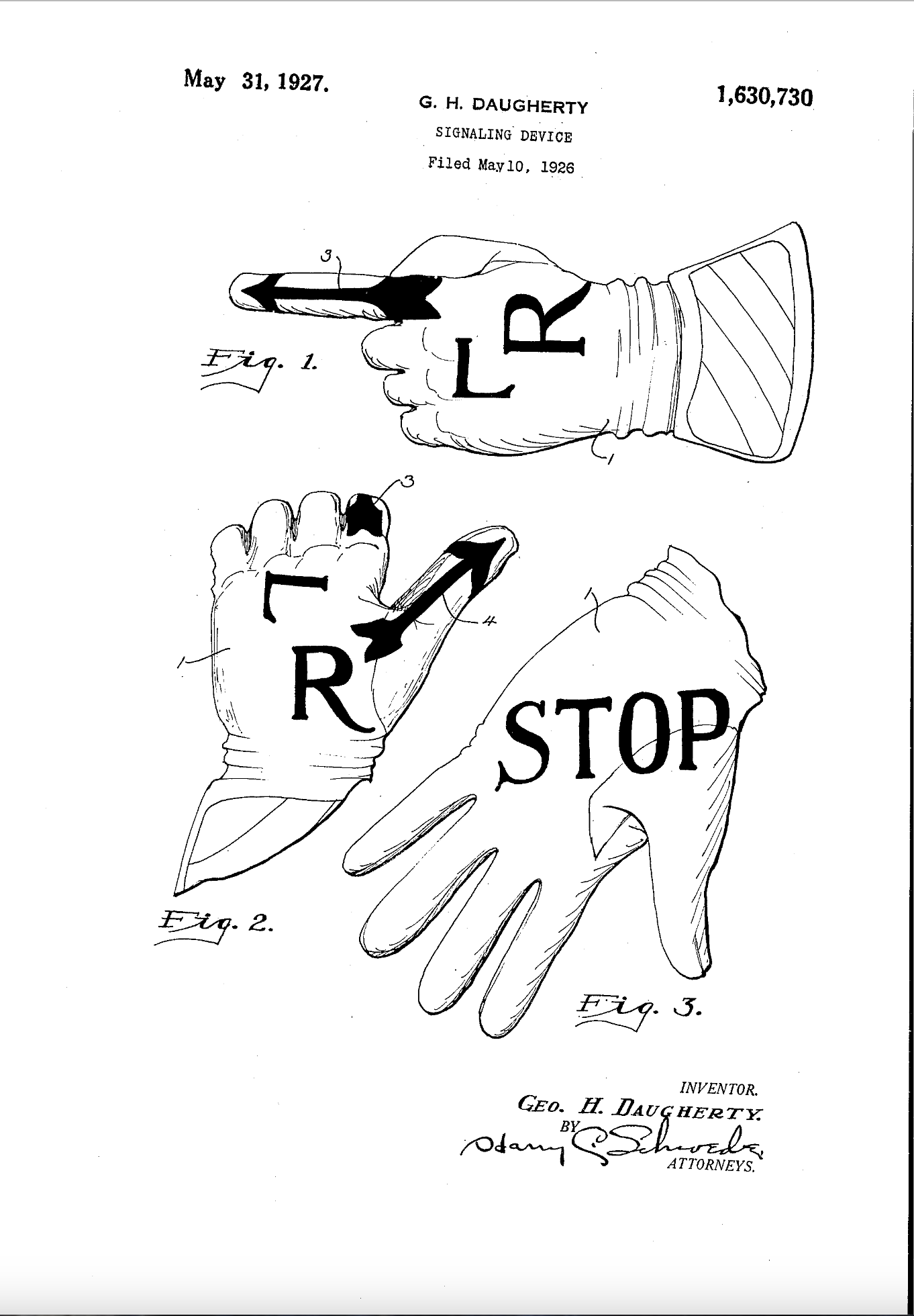
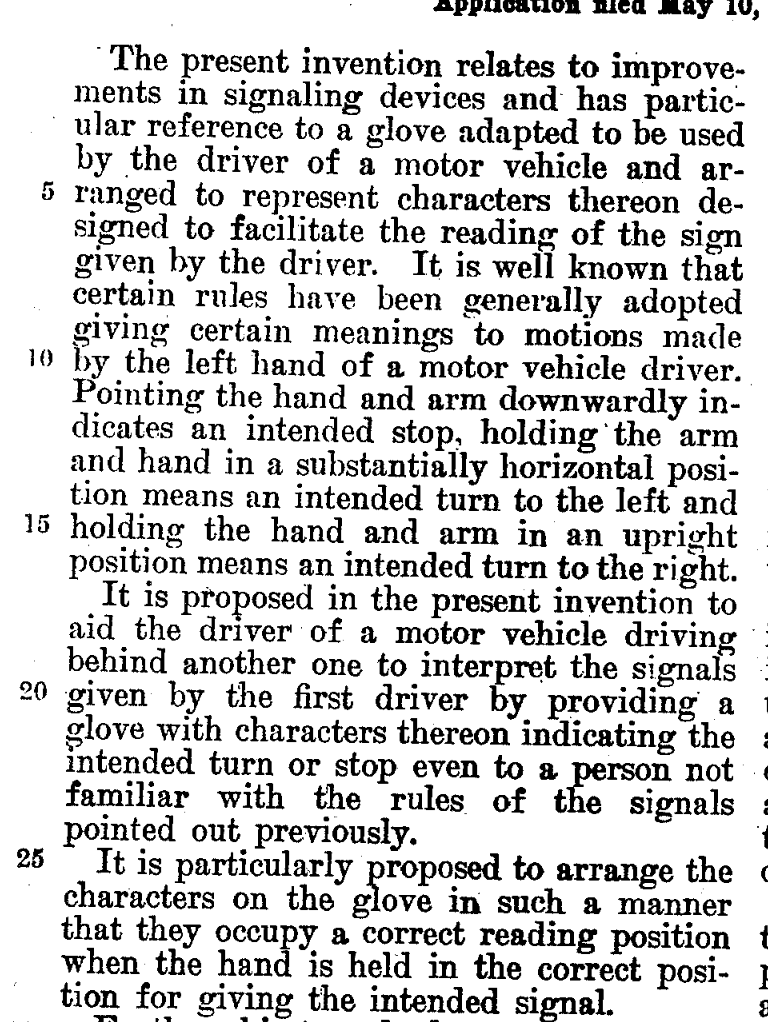
Posted By: Paul - Sat Mar 02, 2024 -
Comments (0)
Category: Inventions, Patents, Signage, 1920s, Cars
Fireball Jungle
The Wikipedia page.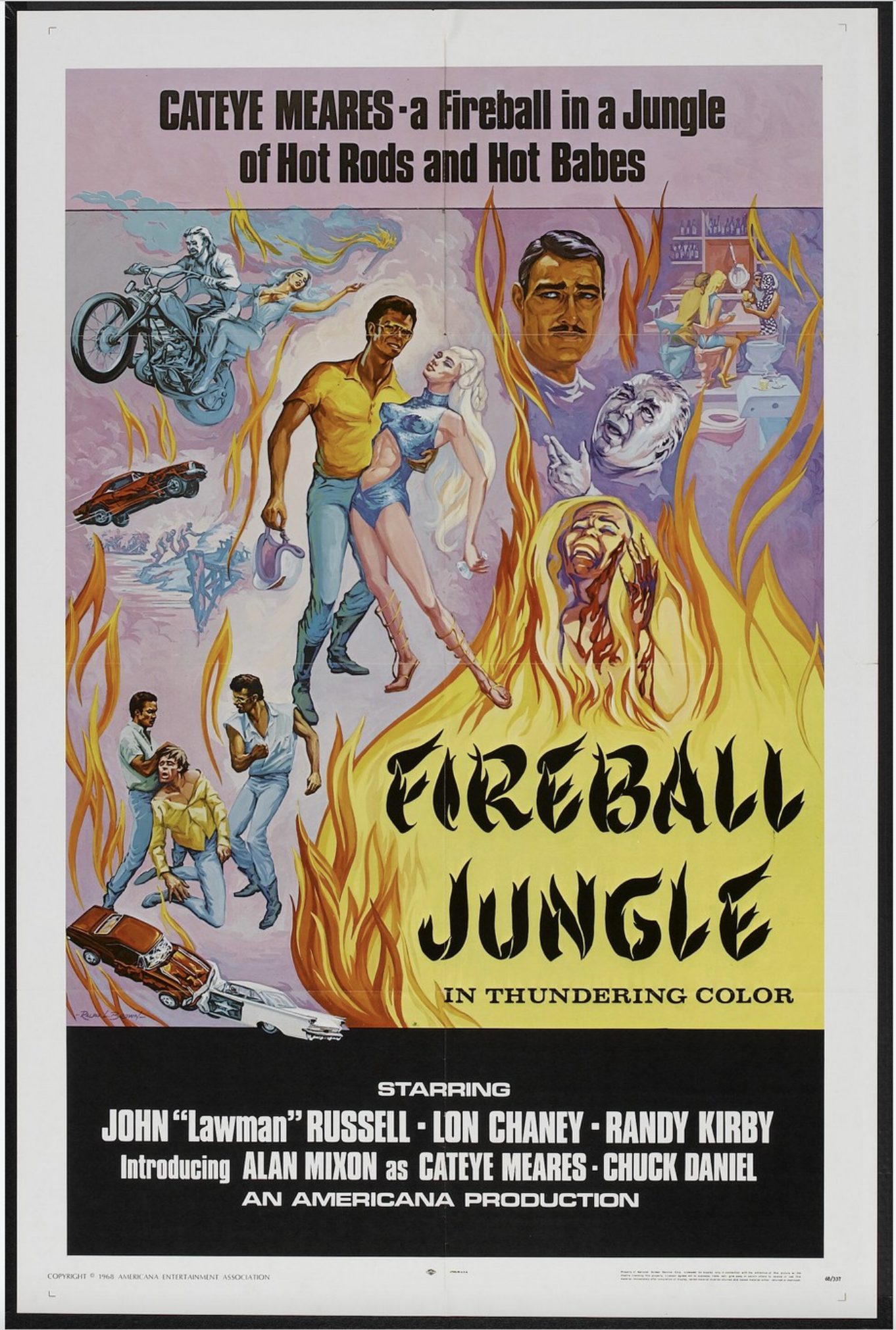
Posted By: Paul - Thu Feb 15, 2024 -
Comments (4)
Category: Hygiene, Ineptness, Crudity, Talentlessness, Kitsch, and Bad Art, Movies, 1960s, Cars
Wrong turn leads into coal mine
That's a serious wrong turn!I had to look up the meaning of a "pit prop." It's a post that holds up the roof of a coal mine.
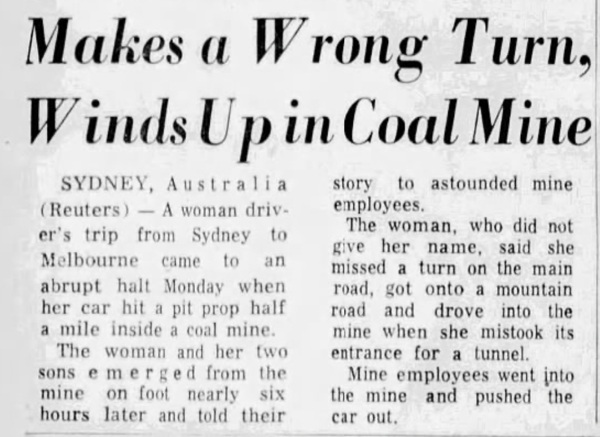
Brantford Expositor - Jan 8, 1963
I asked Microsoft's AI image creator to illustrate the news story. After a few false starts, this is what it came up with. Not too bad.
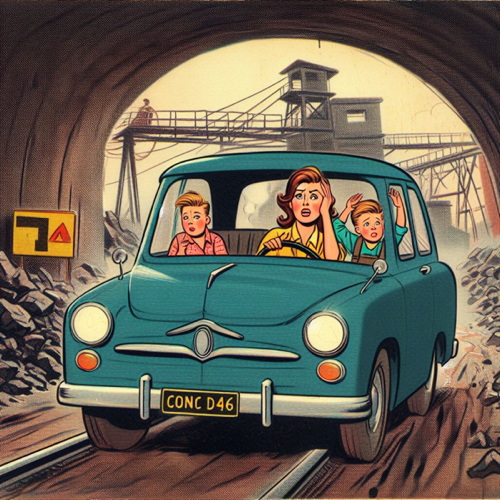
Posted By: Alex - Tue Feb 06, 2024 -
Comments (2)
Category: Confusion, Misunderstanding, and Incomprehension, 1960s, Australia, Cars
The Recording Rosary
Damon Doherty invented the "Recording Rosary" so that people could pray the Rosary while driving. As a traveling jewelry salesman he found that "Rosary beads sometimes became tangled in the gear shift as he prayed his way from city to city." So he invented a solution (Design Patent 167,827).I'm not Catholic, and know very little about praying the Rosary, but I've got a few questions about his invention.
First, is it considered okay to multitask while praying the Rosary? So it's okay to pray the Rosary while driving a car?
Second, the second article below notes that his Recording Rosary was "an actual Rosary of legitimate material." What are the 'legitimate' materials that Rosary beads can be made out of?
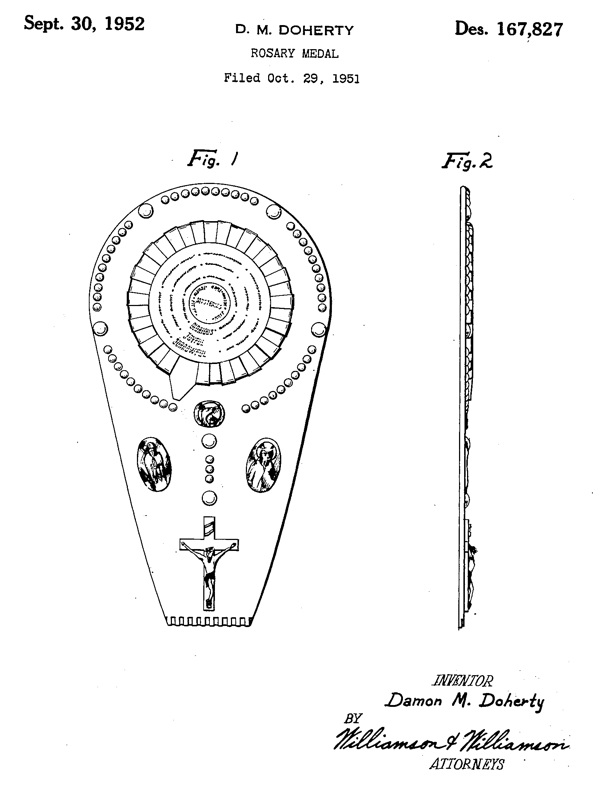
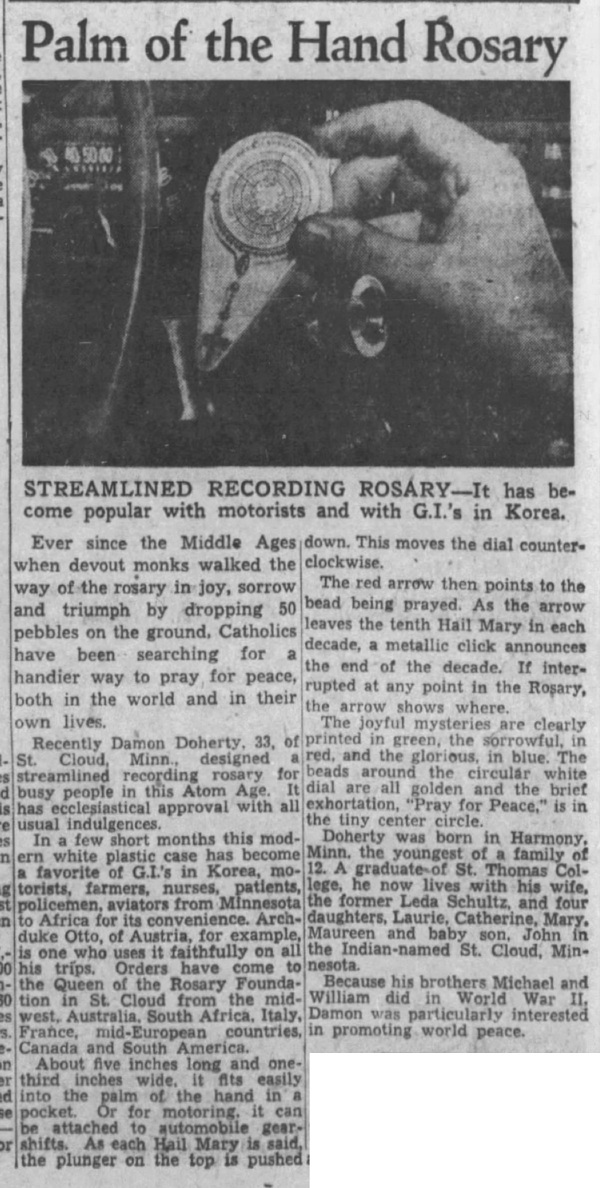
Boston Globe - Feb 22, 1953
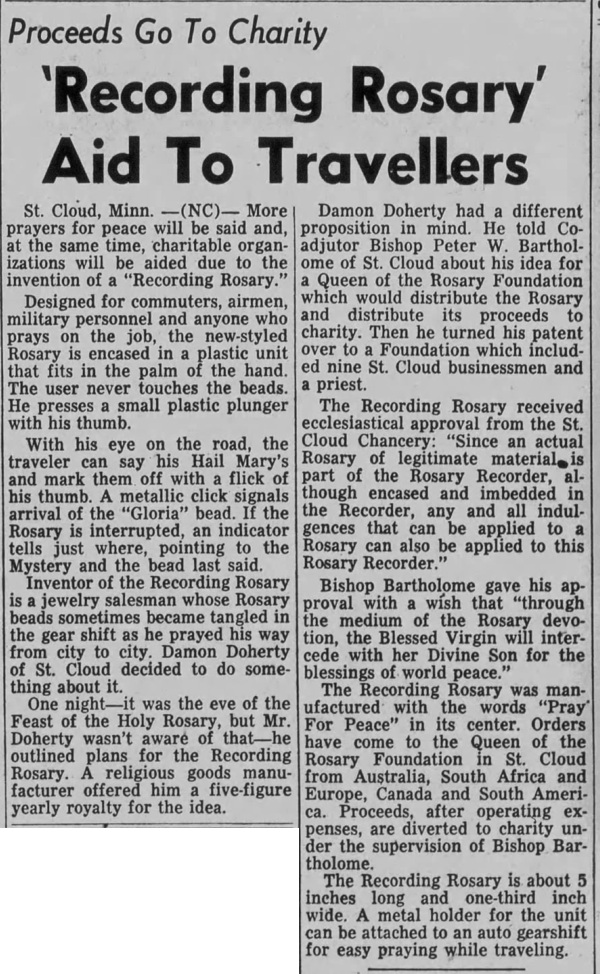
Omaha Our Sunday Visitor - Mar 15, 1953
Posted By: Alex - Sun Jan 14, 2024 -
Comments (2)
Category: Religion, Patents, 1950s, Cars

| Who We Are |
|---|
| Alex Boese Alex is the creator and curator of the Museum of Hoaxes. He's also the author of various weird, non-fiction, science-themed books such as Elephants on Acid and Psychedelic Apes. Paul Di Filippo Paul has been paid to put weird ideas into fictional form for over thirty years, in his career as a noted science fiction writer. He has recently begun blogging on many curious topics with three fellow writers at The Inferior 4+1. Contact Us |




